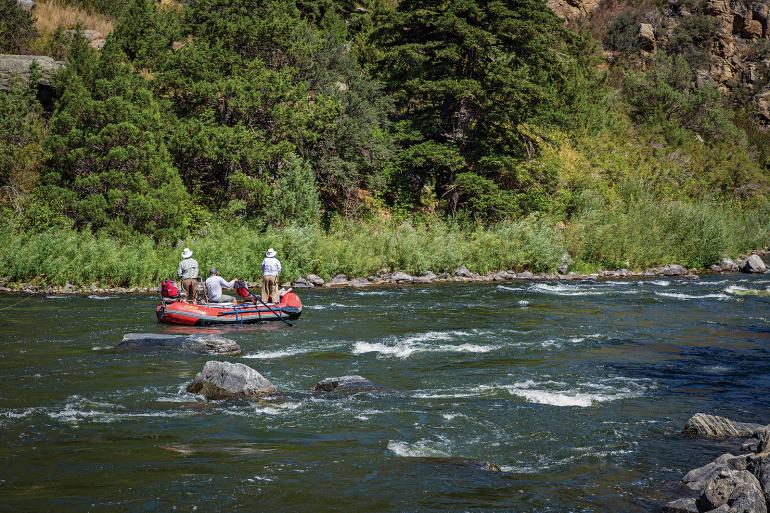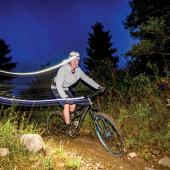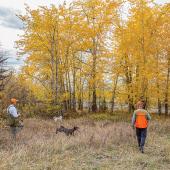Feast Oar Famine
Rowing a boat for fishing.
You’ve squeezed through dozens of Class III rapids, bounced from rock to rock down a few easier Class IV stretches, and now you’re wondering what on Earth could possibly challenge your unfaltering rowing skills? The Kitchen Sink is too cliché, the Lochsa too far, and you’d fall asleep rowing the Gallatin or Yellowstone for the 40th time this year.
Well, there’s good news: half your friends own a 9-foot 5-weight but are too cheap to buy their own rafts or driftboats. To put your rowing skills to the test, consider taking these moocher friends for a fishing float. It might seem like a simple task, but captaining a fishing boat requires an entirely different set of skills than navigating whitewater. If you’ve ever stood in the front of a boat trying to trick trout while your buddy bounces off rocks and practices his 360s, you know what I’m talking about. When rowing for anglers, keep these three principles in mind: move slow, be consistent, and read the small water.
Move Slow
For your fly casters to catch fish, their flies must have a good drift. Which means your boat needs to be moving at the right speed relative to the water. Oftentimes, fish will rest in slower parts of the river, tucked behind rocks, on the inside of bends, or in pools below whitewater. As the rower, it’s your responsibility to ensure your fishing buddy has enough time to get a cast into these hideouts. That means you need to slow down the boat by back-rowing—often until your hands blister and your arms feel like noodles. For someone coming from a whitewater background, it will feel like a waste of energy and unbearably slow, but trust me, your friends will appreciate it.
Be Consistent
As with most things in life, consistency brings success, and fishing from a boat is no different. As the person behind the oars, one of the best ways to keep your angler happy is by being predictable in your movements and keeping the bow of the boat steady. Avoid needlessly swaying back and forth across the river or making sharp pivots to avoid obstacles. Not only will your friends catch more fish, but their chances of going overboard diminish considerably. If you need to make a quick movement or dodge a rock, let them know ahead of time, so they can either brace themselves or sit down in the boat.
Read the Small Water
Maneuvering through big rapids takes skill and a trained eye: you assess where the water is going, make sure there are no obstacles, and then position your boat to glide down the river. The same principles apply when you’re fishing, but knowing where the fish live adds yet another variable. As you learn to row your newly christened fishing vessel, keep track of where your anglers are catching the most fish—it will likely be in what you’ve previously considered the boring sections of river. Small currents, subtle shifts in surface speed, and minor changes in depth often denote fishy pieces of water that should be given extra consideration. Learn the nuances of the small water, and you will be rewarded with more fish in the boat.
Next time you’re staring at your raft, wallowing in buyer’s remorse while the big rivers aren’t running, shoot your Simms-clad buddy a text. He’ll jump at the opportunity to get off the bank, and you’ll gain a new appreciation for Montana’s gentler rivers.
Thomas Harbor cut his teeth on the Deschutes River in central Oregon before becoming fed up with his fishing buddies. He now uses water to fight wildfires in Montana.












